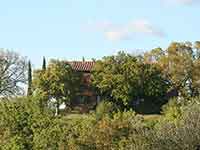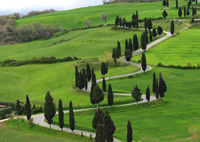The Tree of Fertility the renowned and unique medieval fresco found on the large wall of the Fonti dell’Abbondanza in Massa Marittima. The Albero della Fecondità is a rare example of a thirteenth century mural painting with a most unusual profane subject matter whose origins can be found in ancient fertility cults.
|
 |
||||
The presence of immense black birds hovering over the female figures and beneath the branches of the tree add a dynamic sense of movement throughout the composition. One particular bird to the left of the painting hovers above a redgarbed female figure, resting the point of its tail feather precisely on top of her head. This bird is far removed in appearance from the remaining four birds that roam
|
||||
| The imposing construction that houses the Fonti dell’Abbondanza is one of the most important monuments from medieval Massa Marittima. An epigraph on its façade shows that work was completed in 1265. In the years prior to 2000, the city structurally restored the springs and reestablished the water flow to the three large tubs located underneath the imposing gothic arches. During the restoration residue of mural decoration was found on the lower walls. The complete restoration of one of the walls led to the amazing find: hidden underneath layers of chalky concrete was the Albero della Fecondità. The tree depicts dozens of exceptionally realistic penises hang like enormous pieces of fruit. At the foot of the tree is a group of women waiting for them to fall; two of them squabble over one. A group of crows threatens to attack the “fruit”; a large eagle is a symbol of Pisa and the emblem of the Holy Roman Empire (Massa Marittima was a Ghibelline city until 1266). |
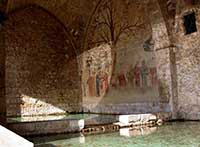 Fonti dell’Abbondanza |
|||
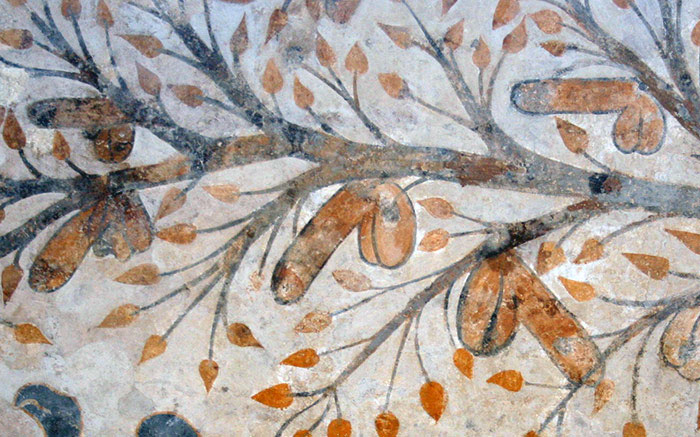 |
||||
The fresco was discovered in 2000 on a wall inside the Fonte dell'Abbondanza, a public fountain in Massa Marittima, in southern Tuscany. The fresco features a tree festooned with 25 human penises and testicles, with several medieval women standing below, some reaching for the dangling 'fruit.' The fresco measures a tremendous five metres in height by six metres in width, and embellishes the left inset of three interior walls in one of Massa Marittima’s major public fountains.
|
||||
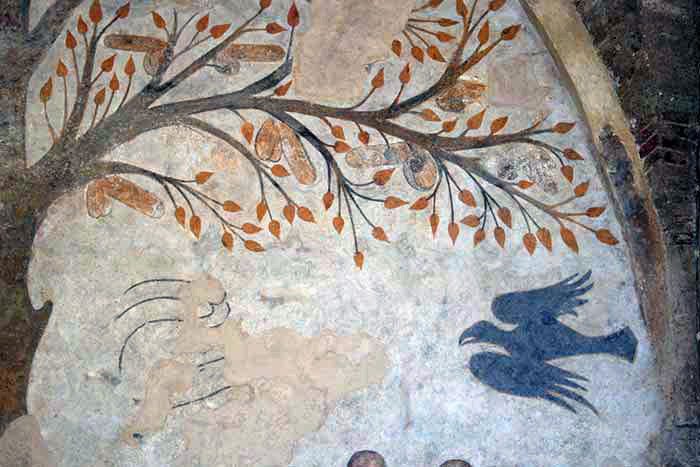 |
||||
The spectre of the serpent haunts the subject matter of the Mural, but because the serpent image is in such disrepair, where nothing but a mere trace outline (if that) remains, we cannot presume that it has a connection to the allegorical Christian Tree of Life as elucidated in Genesis. If there was in fact a clear image of a serpent dangling from the branches of the tree, our perception of the Mural would shift from secular to religious subject matter [1] . |
||||
| Literally resting its behind on the woman’s head, the Ghibelline eagle appears incongruous in both composition and subject matter, therefore, considering formal incoherencies, it would seem that a Ghibelline administration was the patron for the original fresco (comprised of female figures, the tree and its related elements, and the phalli), and a Guelf faction, around the fourth quarter of the thirteenth century, added the Ghibelline symbol to associate such morally objectionable imagery with the Ghibelline party. Considering the Guelf’s allegiance to the papacy, and the spiritual, moral, and ethical mentality this involved, it can be of no surprise that they should oppose the Mural’s subject matter. [1] pp. 19-20) The painting of phalli occurred simultaneously with the painting of the tree, its leaves, and its cylindrical fruit-like forms, as phalli occur in fresco layers both behind and ahead of the tree branches. This gesture demonstrates an advanced two-dimensional system of perspective and a facility of fine detail rarely observed in mural works from this period. |
|
|||
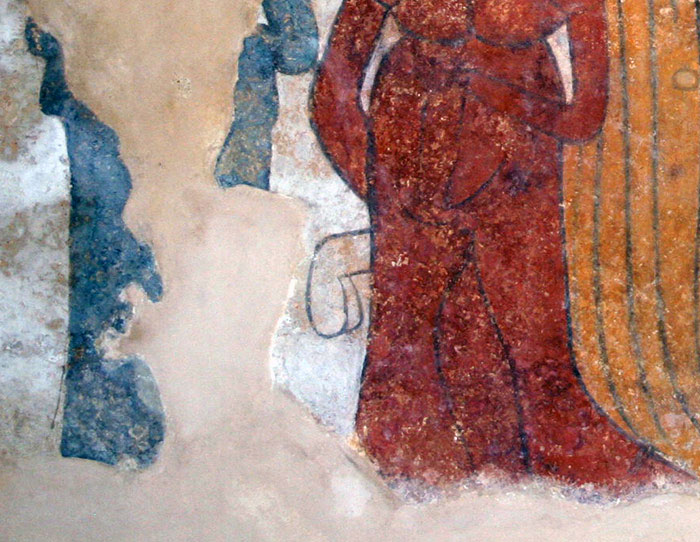 |
||||
|
||||
Mediaeval illuminations | The Roman de la Rose
|
||||
Images have phallus trees have appeared in other contexts, e.g., The Massa Marittima Mural, but any attempt to find meaning of them seems to result in series of circular references to the few examples that are known. What remains probable is that the Mural’s subject matter finds its source in the Roman de la Rose. (1)
|
||||
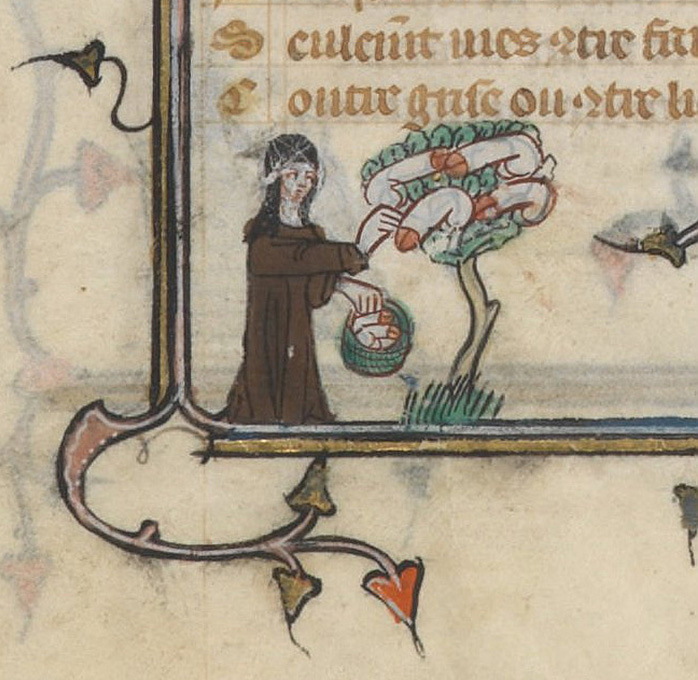 |
||||
Nun at Phallus Tree. BNF fr. 25526, 106v
|
||||
 |
||||
folio 106v, Nun at phallus tree and Nun and monk embrace
|
||||
The Roman de la Rose
|
||||
|
|
||||
fol. 106r
|
||||
 |
 |
 |
||
| fol. 160r. | fol. 111r | fol. 111v | ||
|
||||
 |
||||
Podere Santa Pia |
Castiglioncello Bandini
|
Sant'Antimo |
||
Crete Senesi, near Asciano |
Cipress road ner Monticchiello |
Colle Val d'Elsa |
||
 |
||||
Spanish Mill in Orbetello |
San Bruzio
|
Massa Marritima |
||
 |
||||
Set on a hill in the lush Tuscan countryside, Podere Santa Pia overlooks nearby medieval hilltop towns, vineyards, and olive groves, and, in the distance, the Tyrrhenian Sea with the islands of Monte Cristo and Corsica in the distance. |
||||
Matthew Ryan Smith, Reconsidering the ‘Obscene’: The MassaMarittima Mural, Queen’s Journal of Visual & Material Culture, Issue 2, 2009 | www.academia.edu |
||||
|
||||




